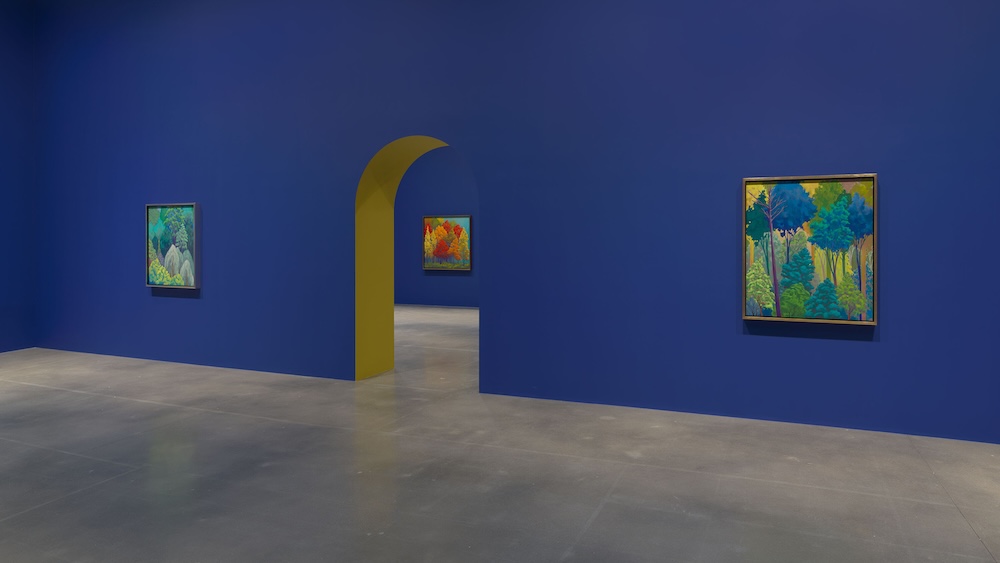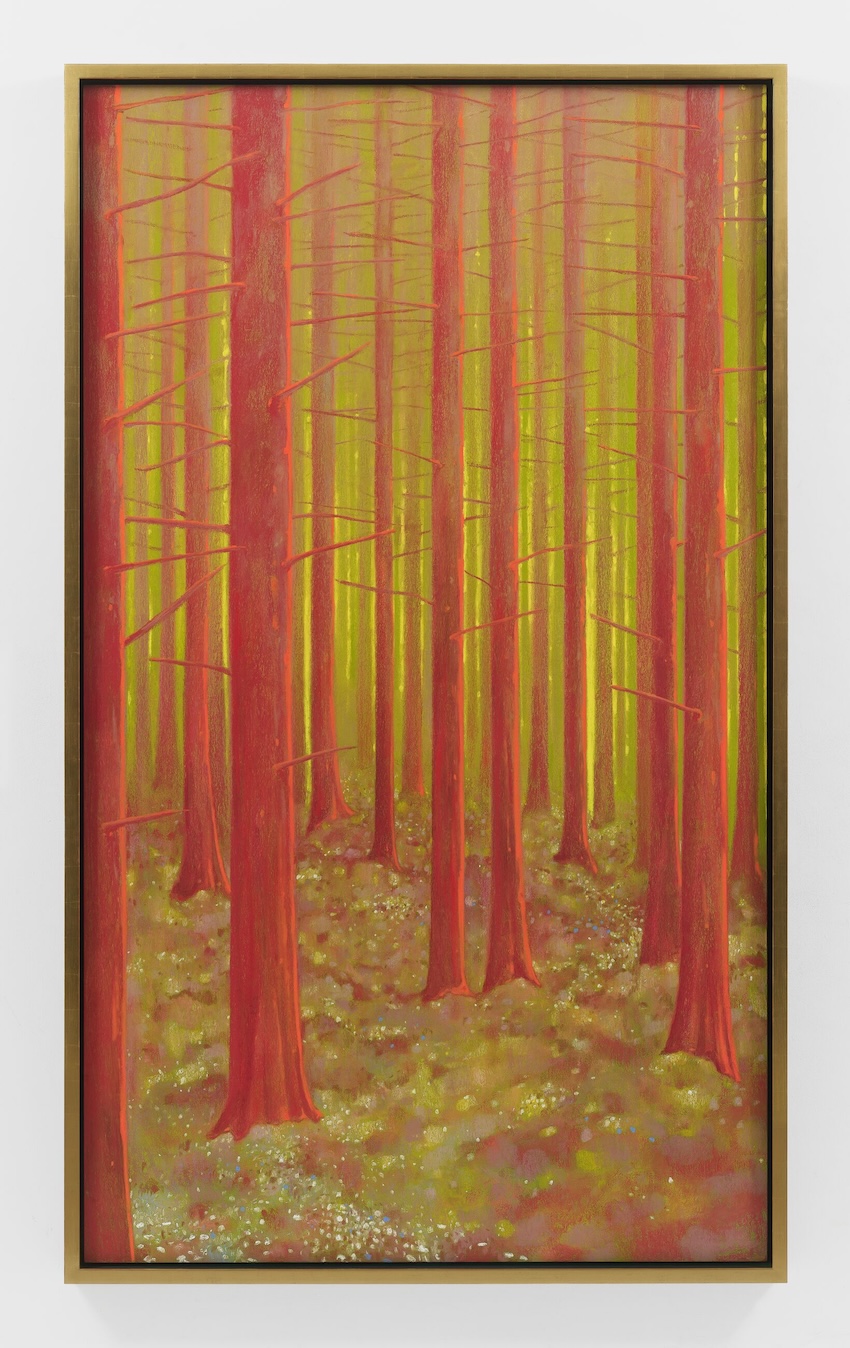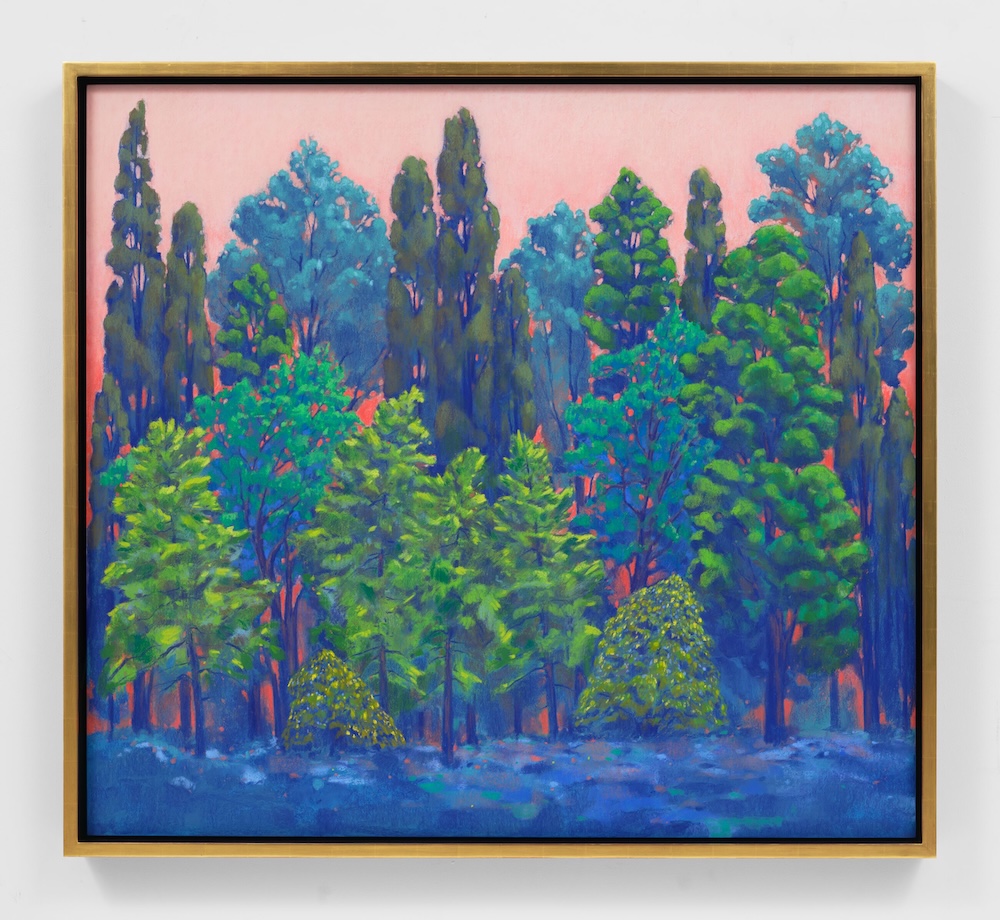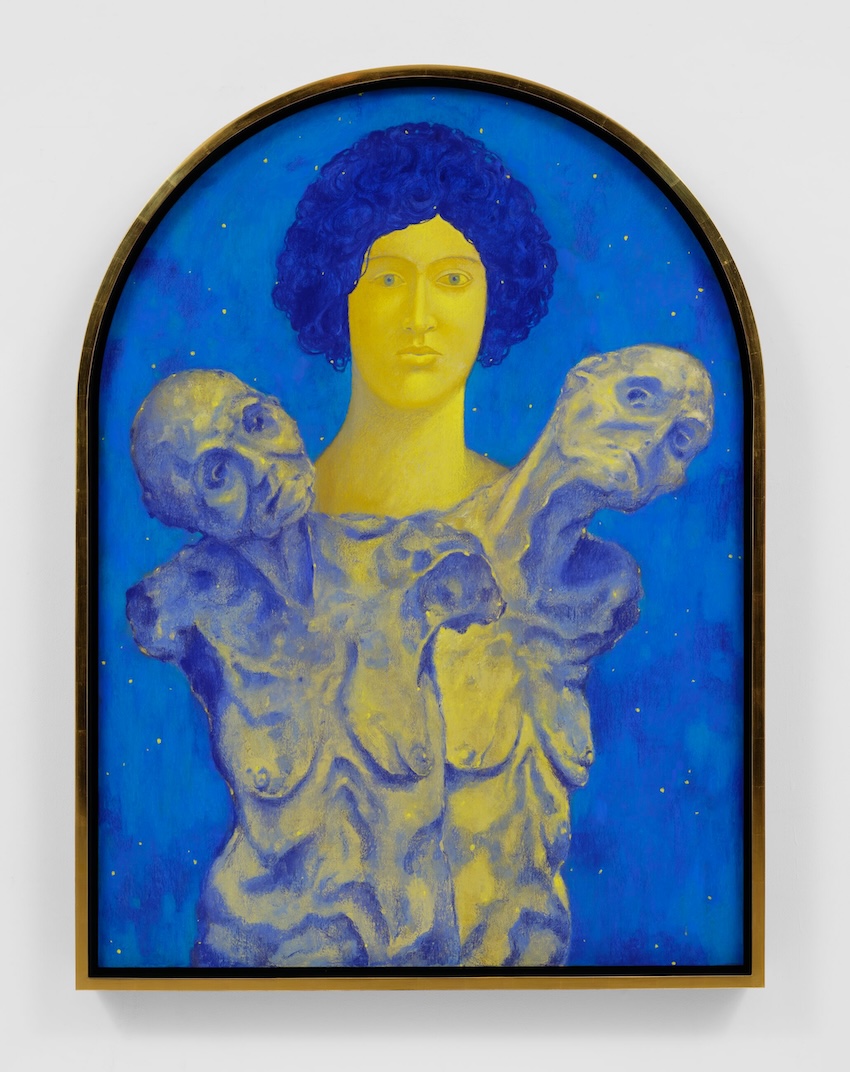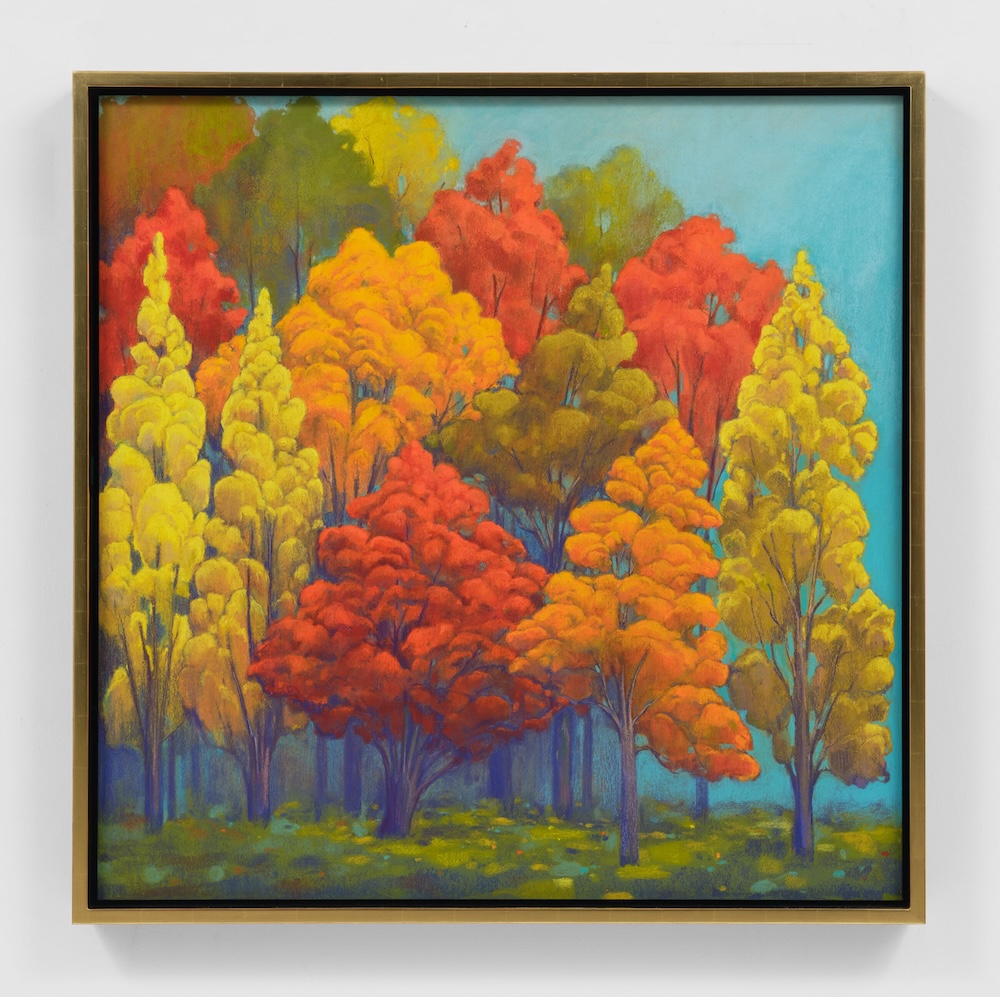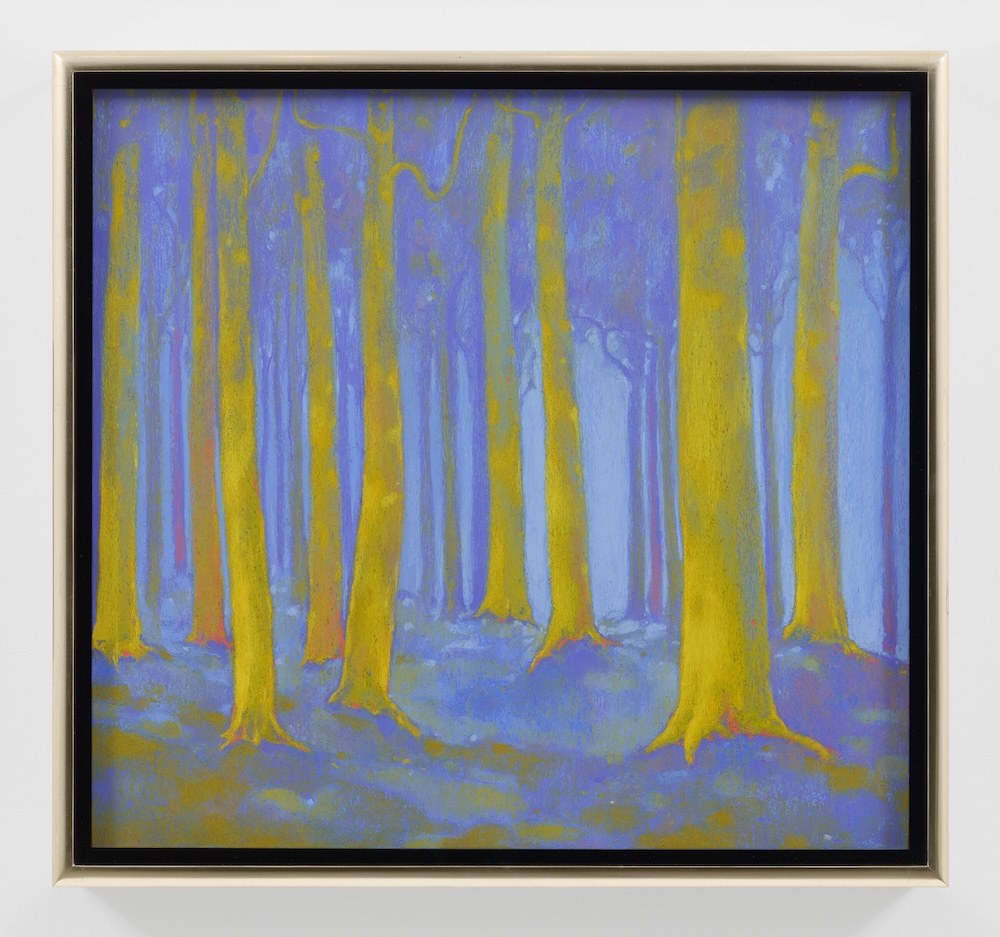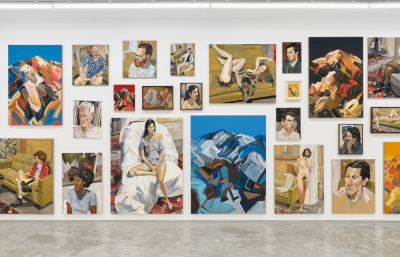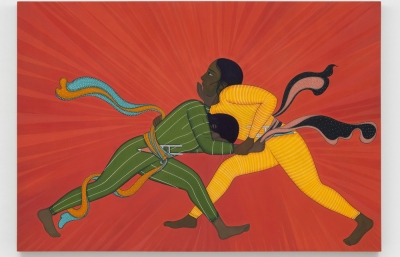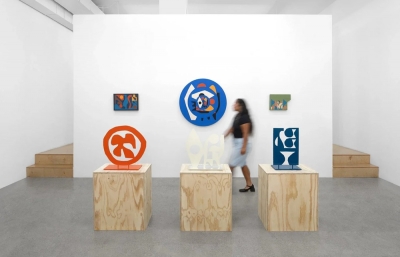The universe of Swiss painter Nicolas Party comes alive in his first solo exhibition at Hauser & Wirth in London. Featuring new treescapes and portraits in pastel, this exhibition celebrates and challenges longstanding and cherished conventions of representational painting through Party’s signature style. The portraits in the exhibition, inspired by two sculptural works by Camille Claudel and Auguste Rodin, serve as a conceptual springboard to also frame the group of treescapes on view. Party utilizes the symbolism and mythological references present in these sculptures to confront the inevitability of aging and death, two themes that have long been central to his artistic exploration. Known for his unique use of soft pastel, the artist has become a master of the medium, employing the pigment’s versatility, immediacy and saturated color.
Party is known for conceiving his exhibitions as comprehensive environments, incorporating architectural interventions and extending the palette of his paintings across the gallery’s walls. Heightening the powerful formal and psychological effects of his subject matter, he has chosen to steep the surrounding walls in a rich electric blue for this exhibition, punctuated by arches that lead the viewer through each space and frame the view of a work featuring a waterfall.
Situated in dialogue with the treescapes, ‘Portrait with Camille’ (2025) draws inspiration from Camille Claudel’s sculptural work entitled ‘Clotho’ (1893), the namesake of this exhibition. The sculpture depicts the figure from Greek mythology Clotho, one of the three fates who was known to spin the thread of human life. Party’s portrait echoes the haunting representation of time’s passage, its gnarled form capturing the ravages of age and the weight of mortality. Party’s second portrait, entitled ‘Portrait with Auguste’ (2025), references a sculpture by Auguste Rodin entitled ‘She Who Was the Helmet Maker’s Once-Beautiful Wife’ (1885 – 1887). Rodin’s bronze is another powerful meditation on aging and physical decline, and acts as a counterpart to Claudel’s ‘Clotho,’ creating a layered dialogue between two artists whose lives and work were intimately intertwined.
Within each painted portrait, Party introduces a central figure: an image of perfect, youthful stillness. These figures, devoid of motion or emotion, appear almost frozen in time. Their presence offers a stark contrast to the weathered, timeworn forms of the sculptures surrounding them. Suspended in an eternal moment of idealized youth, they challenge the temporality embodied by the sculptural references.
Party will also display a series of pastel works focused on the depiction of trees, a subject that has been a recurring motif throughout the artist’s practice. The transition from the portraits to the treescapes invites the viewer to reflect on continuity and change, anchoring the symbolic weight of the earlier works within a broader meditation on natural cycles and temporal rhythm.
Trees have long served as powerful symbols across cultures, representing both life and permanence, as well as the visible passage of time. Their cyclical transformation through the seasons offers a natural metaphor for change, mortality and renewal. Each pastel depicts a different condition of a treescape—some are lush, green and vibrant, evoking the fullness of spring or summer, while others portray bare, leafless trees that suggest the starkness of winter. In these latter works, the exposed branches resemble skeletal forms, subtly echoing the structure of bones and evoking a quiet reflection on dormancy and fragility.
In this series of treescapes, only one pastel includes an additional element, a waterfall cascading through the landscape. Its presence interrupts the otherwise still forest scene, introducing motion and symbolic weight. The waterfall, a universal emblem of the unstoppable flow of time and life’s constant transformation, serves as a connective thread, tying together several of the show’s overarching themes: impermanence, renewal and the transition from stillness to movement. In contrast to the quiet, rooted nature of trees, the waterfall acts as a rupture, a reminder that change is inevitable and that even the most grounded forms are shaped by time’s current.



